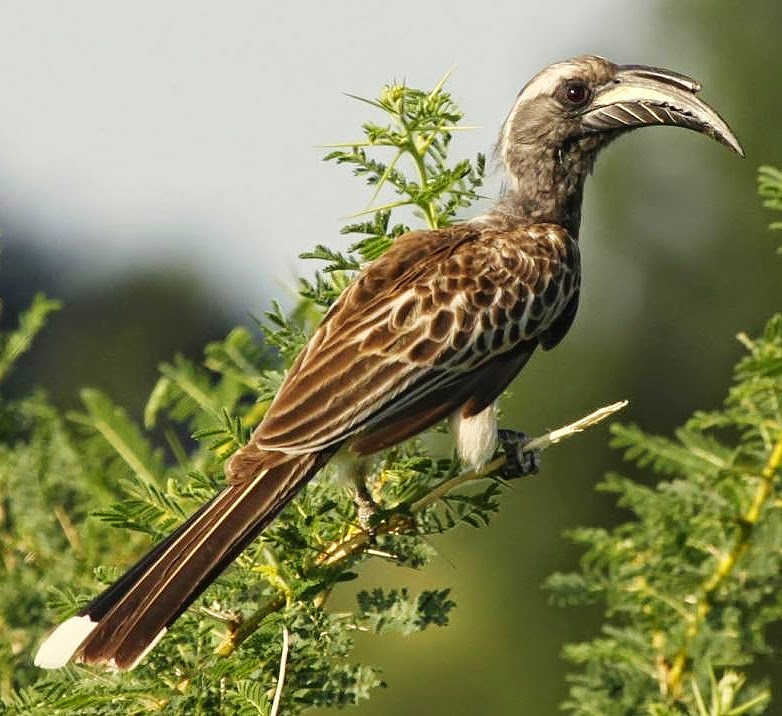Tockus nasutus
 |
| Photo by Carmelo López (Internet Bird Collection) |
Common name:
African grey hornbill (en); calau-cinzento (pt); calao à bec noir (fr); toco piquinegro (es); grautoko (de)
Taxonomy:
Order Coraciiformes
Family Bucerotidae
Range:
This species is found in sub-Saharan Africa, from south-western Mauritania and Guinea east to southern Sudan and Ethiopia, and south Namibia, Botswana and north-eastern South Africa. They are mostly absent from the Congo river basin. It also occurs along the Rea Sea coast of south-western Saudi Arabia and Yemen.
Size:
These birds are 43-51 cm long and weigh 160-230 g.
Habitat:
The African grey hornbill is mostly found in dry savannas and woodlands, also using tropical forests and dry grasslands. They are present from sea level up to an altitude of 1.500 m.
Diet:
They are mostly carnivorous, hunting rodents, frogs and bird eggs and nestlings, as well as spiders and large insects such as grasshoppers, beetles and caterpillars. They also take fruits such as figs, and peanuts.
Breeding:
African grey hornbills can breed all year round, varying among different parts of their range. They nest in a tree hole or sometimes on a rock crevice or abandoned barbet nest, which the female seals from the inside with her own faeces leaving just a small slit through which the males feeds her. She lays 2-5 eggs which she incubates alone for about 24 days. The chicks are fed by the female while the males provides her food, fledging 43-49 days after hatching. They only become fully independent a few weeks later.
Conservation:
IUCN status - LC (Least Concern)
This species has a very large breeding range and is reported to be widespread and common. The population is suspected to be stable in the absence of evidence for any declines or substantial threats.
No comments:
Post a Comment